The Conceptual Design of City’s Public Bicycle System
——Take Jinhua as an example

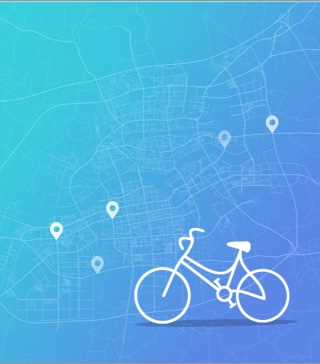
Overview
Time: 2015.08-2016.03
The public bicycle system which functioned as a part of urban transportation can have a big impact on people’s life. In addition, riding bicycle is a kind of economic and environment-friendly exercise that all citizen can participate in. If we can improve the user experience so as to get the best out of the public bicycle system, it is good for the city’s environment and residents’ health. Take my hometown Jinhua as an example, the public bicycle system has been established since 2013. Even the relevant departments have increased the number of bikes and sites constantly, some experience issues still exist. This project, based on a course assignment, provides interaction design of internet operation system for different devices to make operation process of online and offline smoother. Of course, this design is just a conceptual design which still needs to be evaluated its effectiveness and feasibility.
Team Role
Role: User Research /Interaction Design
Method:Interviewing, Storyboard, Spot Map Analysis
What I Did:Setting goals and objectivesStakeholder interviewsEstablishing key audiences/Building personasCreating scenarios and storyboardAnalyzing present public bicycle systemCreating spot mapsLow/High fidelity prototypesConceptual design
Background of Project
The public bicycle system is included in urban construction plan since 2012 and formally established in 2013.
As by November 2014, the data showed that there were nearly 425 sites and more than 8,000 bicycles put into use. The total number of applying cards was more than 59,000, and the maximum daily use reached 2.39 million. To benefit more residents, the relevant departments are still planning to increase the number of bikes and sites.
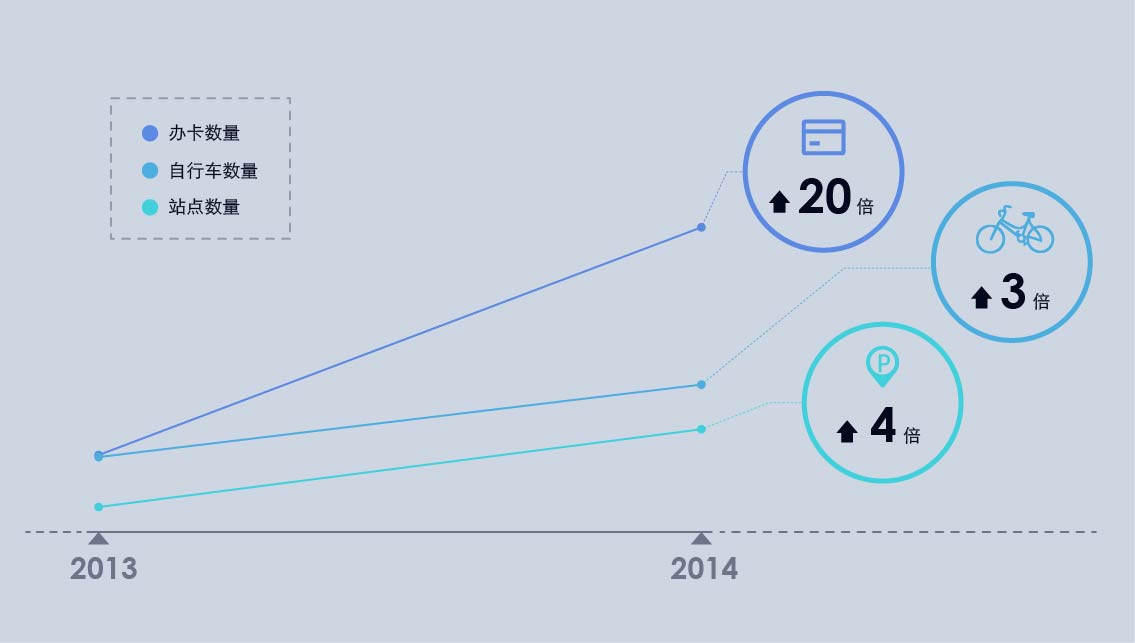
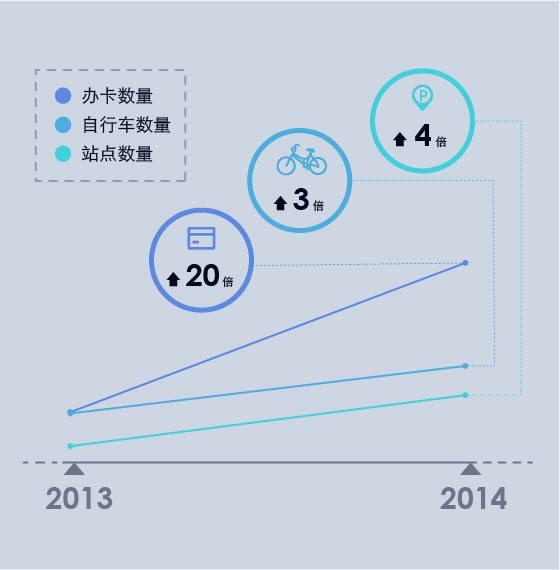
The Spot Map of Urban Road
The main roads of Jinhua are concentrated within the ring road and on both sides of Wu River. Shopping malls, schools, hospitals, communities and other residential areas are built along these roads. So, the bikes will be more frequently used on the roads near these places.
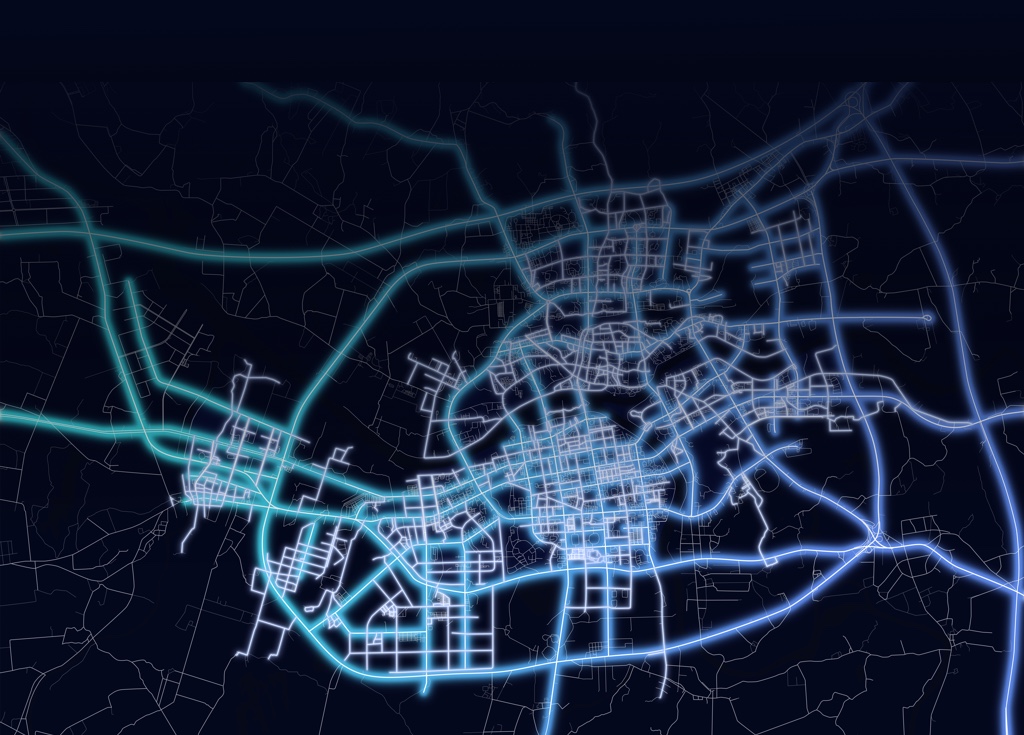
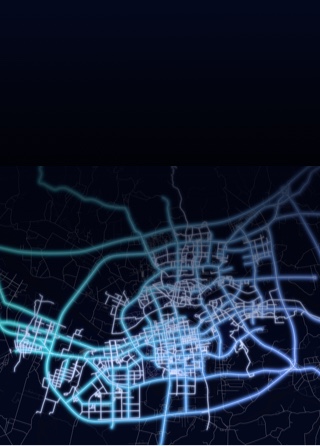
Pictures of Cyclists
You can easily find public bike running on the road if you come to Jinhua. Some are riding along river slowly while some are hurried riding on the busy streets.
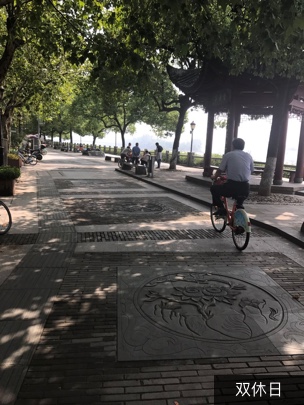
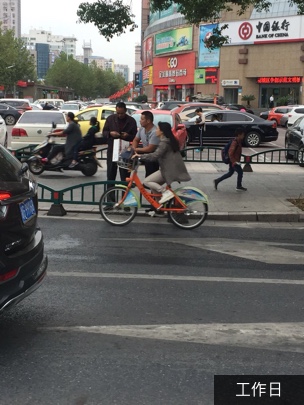
The Spot Map of Public Bicycle Sites
The sites of public bicycle distributed densely along the main roads and branches which connected various residential areas.
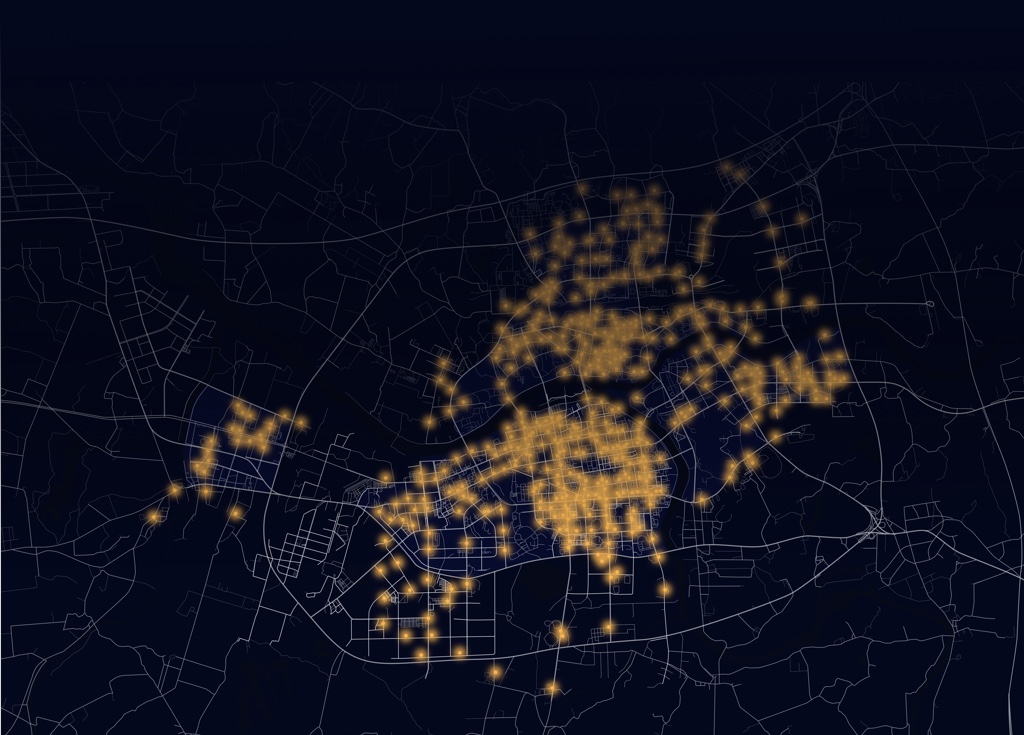
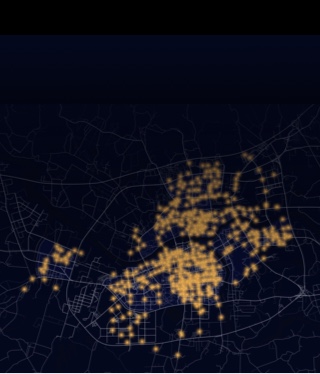
Pictures of Sites
The locations of sites are chosen by fully considering citizen’s daily life.
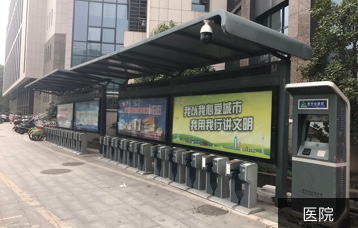
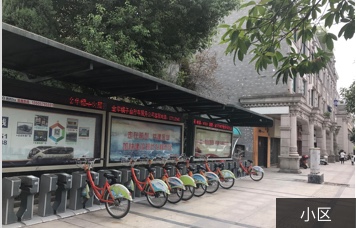
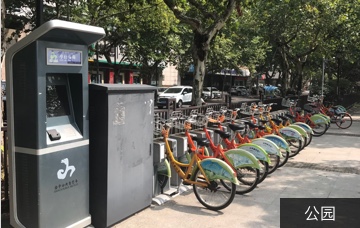
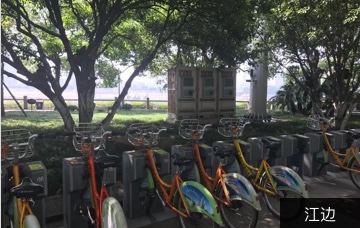
Meaning of Design
The public bicycle system which functioned as a part of urban transportation can have a big impact on people’s life. In some small city, for the reason that the total area is not large and the transport network is not complicated, riding is a good choice. Compare with vehicles, riding is more flexible and convenient, and is applicable to more people because bike requires less technique to master. In addition, people not only use bike as an economic and environment-friendly transportation means but also regard ride as a kind of exercise.
As we observed, since the increasing usage of the public bike, “tidal phenomena”, that is all the parking piles in one site are all empty or full in a short period of time, becomes apparent. There are also some other problems, for example, the card of public bike departs from the bus card and it is easy to be lost, still influence people’s experience. These issues are also mentioned in the user interviews.
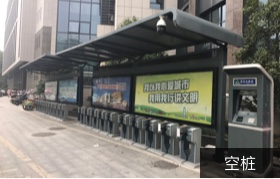
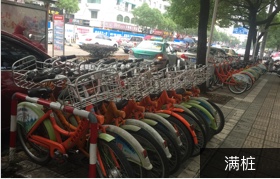
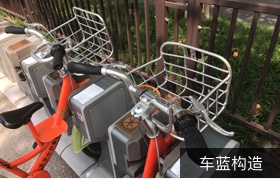
Stakeholder Map
By creating stakeholder map, we can see all the stakeholders and their possible scenarios when we concentrate on the specific issues and analyze constraints and bottlenecks.
Obviously, we should get more insights in the most important stakeholder, that is, cyclist’s behavioral and psychological features when we design the public bicycle system. But, the department and manufacturer should also be taken into account because they are closely related to the transportation network and the quality of the bikes.
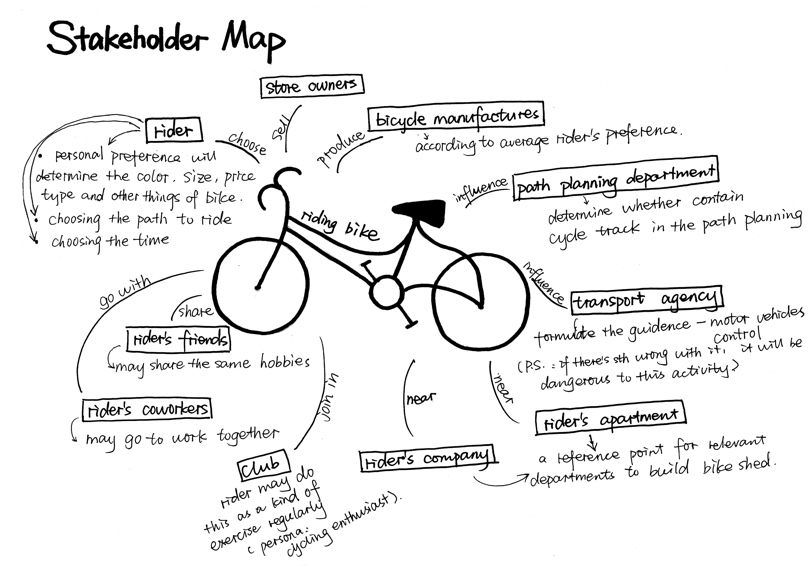
User Interview
The survey shows that there are three kinds of users, that is quinquagenarian, office worker and students, who prefer to choose public bicycle. We picked six users from these three types and conducted interviews to find general scenarios and pain points.
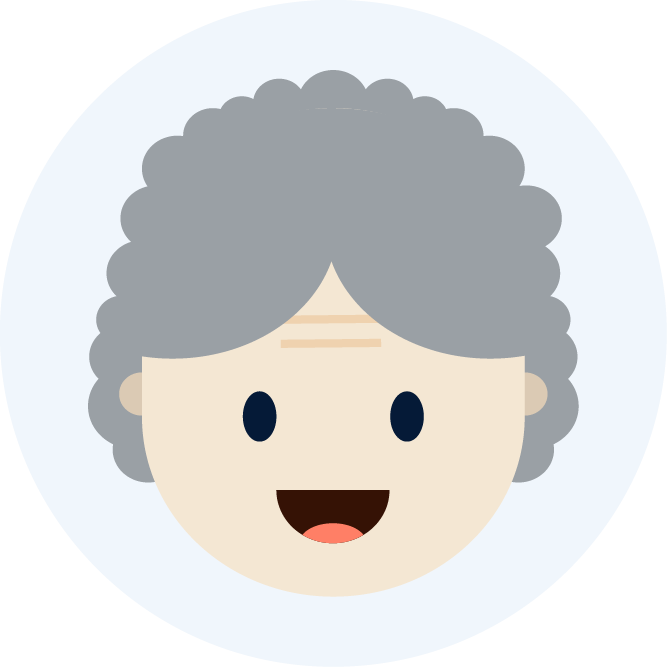
“I usually ride to the supermarket, not far away from my home, to buy some food. The sites are set both near the community and supermarket. It is really convenient. You can ride whenever you want.”
“The basket is useless. Its grid is too large to contain vegetables without bag and it will overflow if things are too many.”
“The card is easy to be lost. If I put the card into my pocket, it will probably be missing when I riding. But if I put it into my bag, I am quite worried about that someone will take it if I put it in the basket.”

“Sometimes I ride to work because the work place is not far and it always meets traffic jam in the morning. … I have to cost time to wait for bus and the distance from my home to bus station is not very close.”
“I ride more now. It is quite convenient because the sites are more than before.”
“Some bikes were hard to ride and I found many swiping machine did not work. In addition, the operation systems of some sites do not work very well and the service it provided is useless. I used only once.”

“I usually ride to school on weekdays or ride to the class on weekends.”
“No parking pile left if I go to school late and if I leave school late, there is no bike left. I have to take bus instead.”
“The card is easy to be lost. My classmate had applied for new card more than once.”
Storyboard
We focus on the internet operation system design and its connection with existing facilities by analyzing the data gathered from interviews and combining the current situation of the public bike system.The storyboards showed below:
Scenario 1
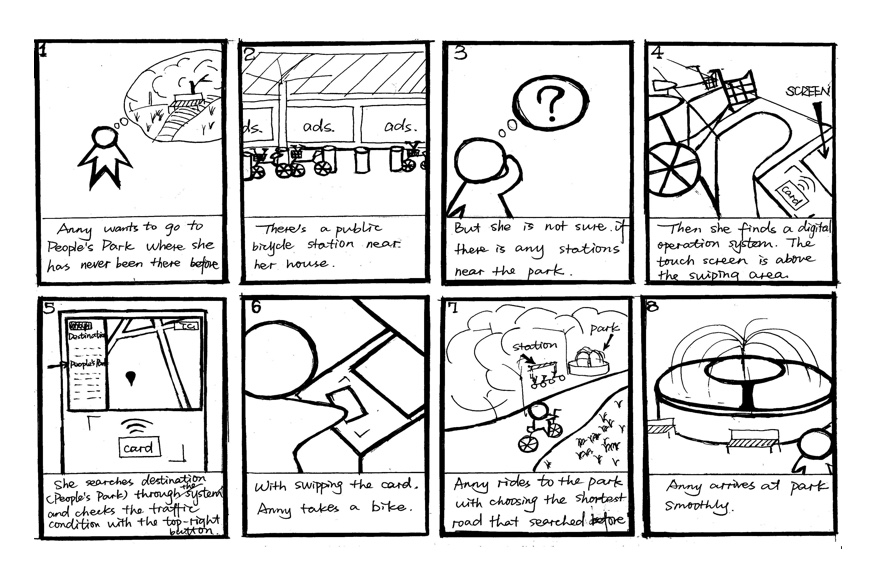
Scenario 2
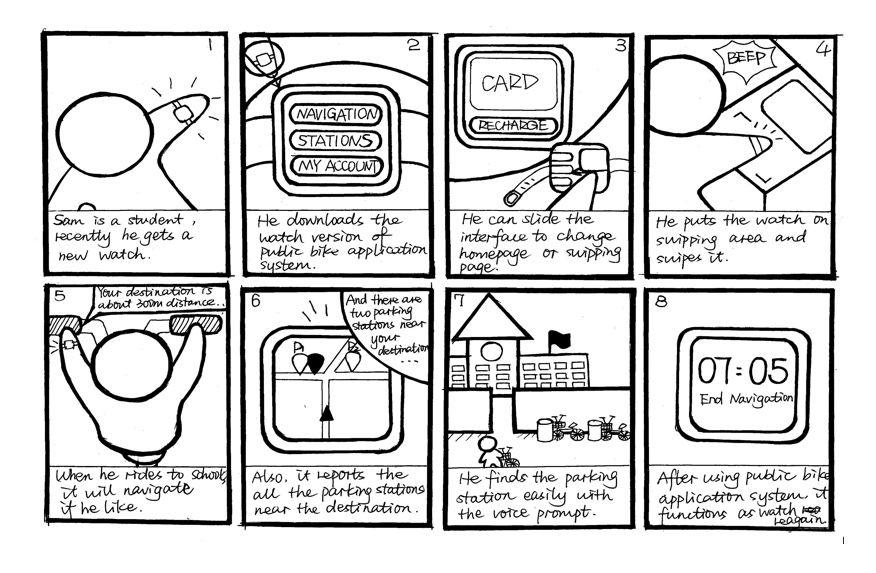
Scenario 3
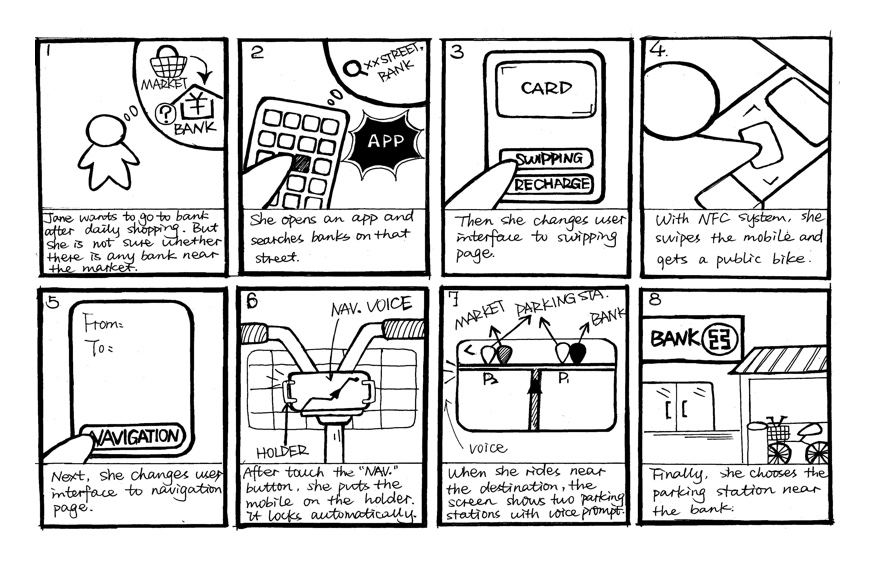
The Prototypes of Conceptual Design
By synthesizing scenarios shown on storyboards, feedbacks from user interviews and the idea of interconnection, I designed the interactive interface of app, watch and site’s operating machine so as to solve some problems, for example, inconvenience card, and improve the current user experience.
Interactive Interface of Site’s Operating Machine
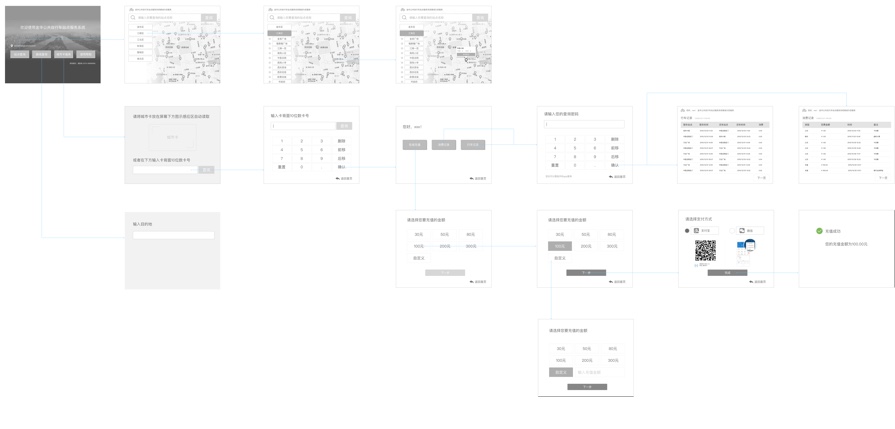
Interactive Interface of APP

Interactive Interface of Watch
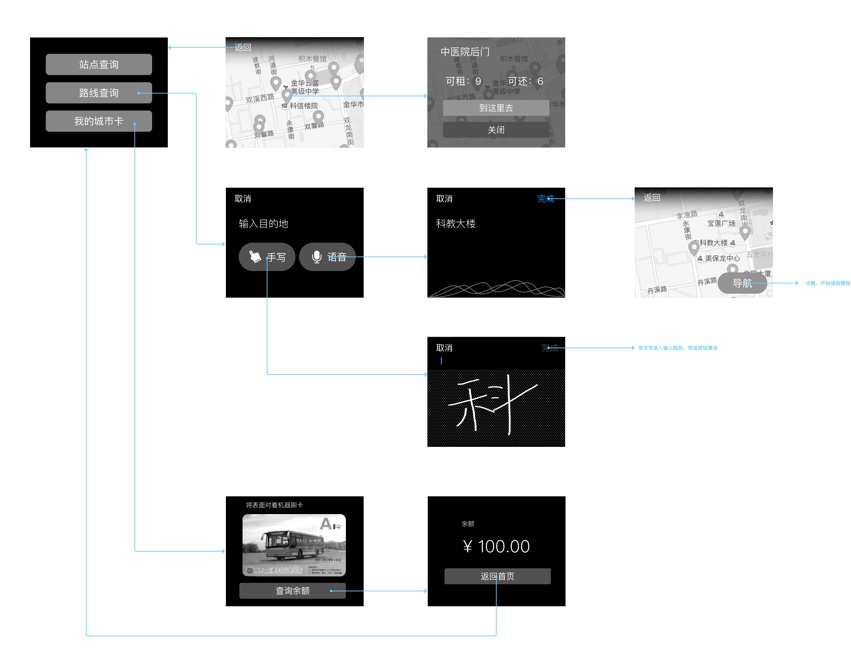
Conclusion
The idea of this project comes from a course assignment. Since the public bike is also a part of our daily life, I supplement some research data and operation system for other device to this project. After all, it is just a conceptual design that has not been evaluated rigorously.
The assignment was completed in 2015, supplemented in early 2016 and eventually presented on my portfolio site in 2017. Happily, in the past two years, Jinhua’s public bicycle system has changed tremendously, and many points given in this project have already come true.
At present, the two apps showed above have been widely used in Jinhua.
According to the current development trend, the public bicycle system will become more close to citizen’s life in the future.